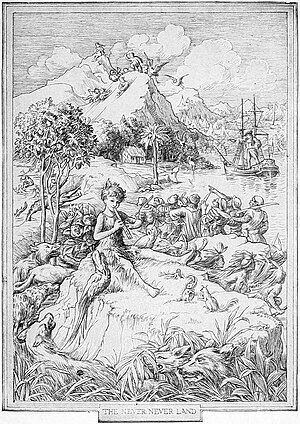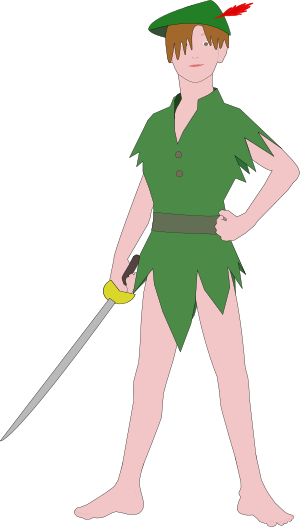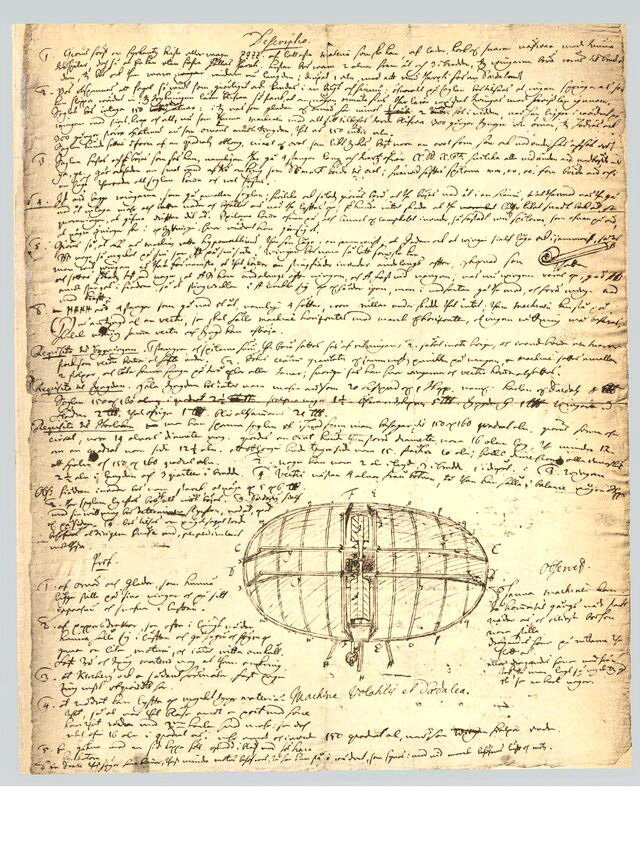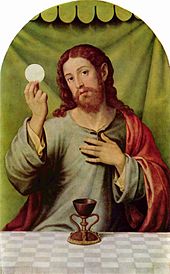![bullet_15]() Pistis Sophia is an important Gnostic text discovered in 1773,[1] possibly written between the 3rd[2] and 4th centuries AD.[3] The remaining manuscript, which scholars place in the late 4th century,[4] relates the Gnostic teachings of the transfigured Jesus to the assembled disciples (including his mother Mary, Mary Magdalene, and Martha), when the risen Christ had accomplished eleven years speaking with his disciples. In it, the complex structures and hierarchies of heaven familiar in Gnostic teachings are revealed.
Pistis Sophia is an important Gnostic text discovered in 1773,[1] possibly written between the 3rd[2] and 4th centuries AD.[3] The remaining manuscript, which scholars place in the late 4th century,[4] relates the Gnostic teachings of the transfigured Jesus to the assembled disciples (including his mother Mary, Mary Magdalene, and Martha), when the risen Christ had accomplished eleven years speaking with his disciples. In it, the complex structures and hierarchies of heaven familiar in Gnostic teachings are revealed.
The text proclaims that Jesus remained on earth after the resurrection for 11 years, and was able in this time to teach his disciples up to the first (i. e. beginner) level of the mystery. It starts with an allegory paralleling the death and resurrection of Jesus, and describing the descent and ascent of the soul. After that it proceeds to describe important figures within the Gnostic cosmology, and then finally lists 32 carnal desires to overcome before salvation is possible.
The female divinity of Gnosticism is Sophia, a being with many aspects and names. She is sometimes identified with the Holy Spirit itself but, according to her various capacities, is also the Universal Mother, the Mother of the Living or Resplendent Mother, the Power on High, She-of-the-left-hand (as opposed to Christ, understood as her husband and he of the Right Hand), as the Luxurious One, the Womb, the Virgin, the Wife of the Male, the Revealer of Perfect Mysteries, the Holy Dove of the Spirit, the Heavenly Mother, the Wandering One, or Elena (that is, Selene, the Moon). She was envisaged as the Psyche of the world and the female aspect of Logos.[5]
Title
The title Pistis Sophia (Πίστις Σοφία) is nowhere given as the title of the whole work. The term is obscure, and is sometimes translated Faith Wisdom or Wisdom in Faith or Faith in Wisdom. A more accurate translation, taking into account its Gnostic context, is The Faith of Sophia, as Sophia to the Gnostics was a divine syzygy of Christ, rather than simply a word meaning wisdom. In an earlier, simpler version of a Sophia, in the Berlin Codex and also found in a papyrus codex at Nag Hammadi, the transfigured Christ explains Pistis in a rather obscure manner:
- Again, his disciples said: Tell us clearly how they came down from the invisibilities, from the immortal to the world that dies?
- The perfect Saviour said: Son of Man consented with Sophia, his consort, and revealed a great androgynous light. Its male name is designated ‘Saviour, begetter of all things’. Its female name is designated ‘All-begettress Sophia’. Some call her ‘Pistis’.
Askew Codex
![]()
The phrase “Jesus, who is called Aberamentho” in the original Coptic
Pistis Sophia has been preserved in a Coptic MS., a quarto of 346 pages, written in the Thebaic dialect. This “Askew Codex” was purchased by the British Museum(now British Library) in 1795 from a Dr. Anthony Askew. It has no general title, and begins without any inscription, but is divided into four sections or books, of which the second, third, and fourth, bear separate titles. The second is inscribed secundus tomos pisteos sofias (p. 126, ed. Schwartze), the third and fourth Meros teuchon soteros (pp. 252 and 357). The two first of these sections or books treat, for the most part, of the Pistis Sophia (pp. 43-181). The fourth book, which is defective, presents a simpler and older form of Gnostic doctrine, and was the work perhaps of a different author. It describes Jesus as, immediately after his resurrection, making himself known as the Redeemer to his disciples, and instructing them in the mysteries. The three first books relate, on the other hand, how Jesus gives the disciples a course of instruction for eleven years subsequent to his resurrection, and then ascends to heaven, whence, after completing his redeeming work, he returns to them once more and gives them the last and highest teachings concerning the supersensuous world, the middle kingdom, the under-world, and about the fates of the Pistis Sophia, and of individual human souls.
In the fourth book, Jesus is described as standing, after his resurrection, at an altar on the shore of the ocean, surrounded by disciples, men and women, clothed in white linen raiment. At his command, retire to his left hand, towards the west, the Aeons, the sphaira, the Archontes, with their dynameis, and the whole world. Jesus and his disciples then take their place in medio topo aerino, on the way of the midst (via medii) underneath the sphaira. He proceeds to instruct them concerning the significance and operation of the Archontes of the way of the midst, their binding by Jeu, and the tortures to which sinful souls are exposed from the five evil Archontes in the regions of the air, and also concerning the deliverance of the souls out of their power by the planetary spirits. At the prayer of the disciples that he would save them from those torments, Jesus takes them to a mountain in Galilee, while the Archontes return to their former place. Jesus bids them bring fire and branches of trees, and then, amid mystic prayers, offers the Eucharist (the mysterion aletheias baptismatos) for their atonement. Here follows in the text a lacuna of several pages. But it is evident that meanwhile Jesus has betaken himself with his disciples into the lower world, and there depicts to them the various fates of souls after death, their torments in Orcus, their palingenesiai, and also the conditions under which souls which have found the mysteries and done their penance, will be raised into the thesauros luminis.
Until the discovery of the Nag Hammadi library in 1945, the Askew Codex was one of three codices that contained almost all of the Gnostic writings that had survived the suppression of such literature both in East and West, the other two codices being the Bruce Codex and the Berlin Codex. Aside from these primary sources, everything written about Gnosticism before the Nag Hammadi library became available is based on quotes, characterizations, and caricatures in the writings of the enemies of Gnosticism. The purpose of these heresiological writings was polemical, presenting Gnostic teachings as absurd, bizarre, and self-serving, and as an aberrant heresy from a proto-orthodox and orthodox Christian standpoint.
Text
![]()
Jesus appears to his disciples after the resurrection
The first three books make frequent reference to what is related in the fourth, and complete its descriptions. For eleven years after his resurrection Jesus has instructed his disciples concerning the lower mysteries only up to the 24th mystery. Then, on the 15th of Tobe (Tybi), the day of the full moon, a sudden glorious light invests him, by which he is withdrawn from the view of his disciples and carried up into heaven. The next day he returns to them again, in order now finally to initiate them into all mysteries, from the highest to the lowest, and so impart to them the perfect Gnosis. This initiation, namely, could not be vouchsafed till the whole work of Jesus had been accomplished, the shining vesture left behind in the 24th mystery been restored to him, and his return accomplished to the heavenly locality from whence he had come forth. This introduction is followed by a detailed description of the mysteries, in four clearly distinguishable sections, which do not coincide with the four books as denoted by their titles or inscriptions.
The form of relation is that of dialogue. The disciples, male and female, put questions to Jesus, which he answers one by one, or exhibit the degree which each has attained in Gnosis by allegorical interpretations of scriptural texts and narration. Mary Magdalene is the readiest of all with questions and interpretations. She and John “the Virgin” (Parthenos) are noted (231) as the chief disciples of Christ, that is, as those furnished with the greatest measure of Gnosis. But while Mary Magdalene is distinguished by her special thirst for knowledge, she is also admonished in the fourth book (p. 383) to let other disciples speak as well as herself. So, also, Peter, Andrew, James, Philip, Thomas, Matthew (in the fourth book also Bartholomew and Simon the Canaanite), come forward, and of the women, Salome and the mother of Jesus (kata kosmon). Philip, Thomas, and Matthew commit to writing the instructions which the disciples receive from Jesus (pp. 32, 69 sqq.).
First section
The first section (pp. 4-43) describes the ascent of Christ through the different regions of the spirit-world, from the earth through the way of the midst, and through the various provinces of the Kerasmos, up to the 13th Aeon, in order to accomplish the diakonia entrusted to him by the first mystery, and subject all the Archontes to his dominion.
Second section
![]()
Jesus with Mary Magdalene
The second section (pp. 43-181) depicts the fates of the Pistis Sophia, that is, the penitent and believing Sophia whom Jesus meets, during his ascent, and beneath the 13th Aeon. Seized with longing for the Thesaurus lucis, which lies beyond the 13th Aeon, Pistis Sophia has separated herself from her consort (syzygos), in the 13th Aeon, and thereby incurred the hatred of Authades, one of the Archontes of the 13th Aeon, and of the twelve Archontes under him. Deceived by a false light, generated by Authades, Sophia is enticed and drawn into the deeps of chaos, where she is deprived of her own robe of light by a number of probolai. In seven penitential prayers (metanoiai) she makes her humble and believing supplication to the upper light, and prays for deliverance.
After the seventh penitential prayer, Jesus comes, of his own good will, to her help, and leads her out of the midst of her oppressors. But inasmuch as the command to deliver her from chaos has not yet issued from the first mystery, she is again tormented by her tormentors. After her ninth penitential prayer, Jesus raises her by means of a power of light sent to her, which surrounds her head with a crown of beams, up into a higher region of chaos, where she is purified from the material (hylic) elements which still adhere to her. After the twelfth prayer she is requickened by a fresh power of light, sent to her from the first mystery. But, yet again, once more she is overcome in conflict with her enemies, and is hurled down into the depths of chaos. After this, she is brought out of chaos by the angels Gabriel and Michael, is again invested with the powers of light, of which she has been deprived, and brought by Christ to a place underneath the 13th Aeon, whence she sends up thankful hymns to the upper regions. In this place she remains till the ascension of Jesus. Then, finally, after she has withstood the last assaults of her enemies, Jesus leads her to her former dwelling-place in the 13th Aeon, and brings her back to her syzygos, while she, in new triumphant hymns proclaims the mercy which has been vouchsafed her.
Third section
The third section (pp. 181-246) contains a lengthened description of the orders and degrees of spirits in the upper world, from the lowest to the highest chorema; each degree appearing in its turn as mere darkness in comparison with that above it.
Fourth section
The fourth section (pp. 247-356) finally gives detailed instruction to the disciples concerning the necessity and conditions of metanoia for individual human souls, concerning the sin-destroying power of the various mysteries, and the different fates to which penitent and impenitent souls will be respectively subjected.
Kingdom of Light
At the head of the Kingdom of Light stands the Pater paternitatis omnis (called also Pater thesaurou luminis; aperanton lumen, Sanctus Sanctorum omnium); under him is the mystery of the Seven Voices (mysterion Septem phonon), i. e. probably a Heptad of the highest Aeons, from whom proceed in their turn forty-nine dynameis, with their psephoi. The dwelling-place of the Pater paternitatis is the topos luminis luminum (thesauros luminis, topos aletheias). In this place appear also to exist the fifteen great dynameis of the Pater thesaurou. These are also called Remissores peccatorum (or mysteria), because they are the mediators of the powers of redemption.
Much more completely organised is the kingdom of light, according to the description of the first three books. At its head stands the Ineffabilis, called also the Internus interni and Deus aletheias, the fulness of whose Being is unfolded in his immanent mele Ineffabilis (or verba Ineffabilis) on the one hand, and on the other, in the mysteria, which have issued from him. At the head of these Mysteries, as highest principle of revelation and organ of creation, stands the mysterion Ineffabilis or mysterium primum, called also Verbum unicum Ineffabilis, from whence all other emanations proceed. This is, at the same time, the supreme intelligence which, issuing from the Ineffabilis, is like the Ineffabilis himself, both introspiciens and prospiciens that is endowed with absolute knowledge, both of its own essence and of all other existence. This first mysterium is further the supreme principle of all forgiveness of sin. From it again proceeds the primum (unicum) mysterium primi mysterii, and from these two proceed further three, five, and twelve other mysteries. The upper world, the kingdom of light, finds its completion in the twenty-fourth or last mystery, which again itself produces twelve subordinate mysteries and emanations; beneath this is the magnum lumen charagmes luminis, which again divides itself into five karagmai luminis, the primum praeceptum (statutum), which is divided into seven mysteries, the magnum lumen luminum, the five great Helpers (parastatai, proegoumenoi), which serve to conduct the energies of light into the lower regions, and finally the topos kleronomion luminis, the destined habitation of redeemed souls. The whole Light-Region is divided into three choremata mysterion, which follow one upon the other. The uppermost chorema that of the Ineffabilis, the second that of the primum mysterium, the third (the chorema partis externae, called also secundum chorema primi mysterii) comprises all the other mysteries down to the twenty-fourth. All three choremata are again inhabited by an infinite multitude of spirits, topoi (ortaxeis), apatores, tripneumatoi. These tripneumatoi again are of three grades, hypertripneumatoi, protripneumatoi, and tripneumatoi, with their choremata, taxeis, and mysteria. Again, each of thesetripneumatoi has his tripneumatoi, and further five trees of light and twenty-four mysteries. Besides these are named 124,000 hymneutai, amenytoi, asemantoi, anennoetoi, asaleutoi, akinetoi, with taxeiscorresponding.
The light-treasury
With regard to the region which comes next beneath the realm of light, we learn but little from the fourth book. It is divided into three provinces, the right, the left, and that of the middle between them. What we are told of the rulers of these three dominions agrees so closely with the statements of the three earlier books that we may here conveniently combine both descriptions. There is, however, one essential difference between the latter and the former of these descriptions. According to that, the thesauros luminis is no longer identical, as in this, with the upper realm of light, but is placed below the threechoremata the upper world, and stands at the head of the kerasmos or region of mixed light. The thesauros luminis, or terra lucis (topos probolon) is then, according to this representation, the place from whence the light, which has its source in the upper world, is brought down into the lower world, and whereby it is again transmitted upwards from the one world to the other. In this thesauros luminis are found twelve gathering-points of lights (taxeis taxeon), the seven phonai or amen (which, according to the fourth book, are the seven highest spirits of the world of light after the Pater paternitatis), and five trees of light. Beside the seven phonai and the five trees of light are found, moreover, in this region three amen, the gemini soteres, and nine phylakes, who are charged with the office of guarding the light. From the above-named gathering-points of light proceed further twelve soteres, each of whom again is set over twelve taxeis. The mixture of hyle with the thesauros, or treasury of light, or the already existing combination of purer and impurer elements therein, has produced the material out of which the lower regions of the kerasmos were formed.
Region of the right
Beneath the light-treasury begins now also, according to the first three books, the division between the regions of right and left. The right, with its rulers, takes the first place next the treasury; but, whereas the fourth book names here, in addition to the two great lights, Jeu and Zorokothora Melchizedek, only one other, the Good One, the great Sabaoth, the three first books enumerate six great rulers of this region, Jeu the episkopos luminis, called also primus homo and presbeutes primi statuti, the phylax katametasmatos, then the two proegoumenoi, and, as fifth and sixth, Melchizedek and the great Sabaoth, Father of the soul of Jesus. The office of these rulers is that of forming and developing all lower spheres of existence by bringing down the light out of its treasury, and then conducting it back thither again, and so accomplishing the salvation of such souls as are capable of reception into the higher world.
Middle region
Next, after the region of the right, comes that of the middle (the topos meson), the spirits of which are specially entrusted with the guardianship of human souls. Among them the fourth book names (besides the Zarazaz or Maskelli, which probably belongs here,) the great Iao the Good, and the little Sabaoth the Good, to which the first book adds the little Iao. In this place of the midst the light-maiden (parthenoslucis) has her seat, and is the judge of souls, who either discloses for them the gates of the light-realm, or sends them back into earthly existence.
Under her are placed (according to the text of the later description) seven other light-maidens with their fifteen helpers (parastatai). In the topos Parthenou sun and moon also have their seats (the diskos solisand the diskos lunae), and thence transmit their light, obscured indeed by many veils (katapetasmata), into the lower realms of creation. The diskos solis is described in the fourth book as a great dragon carrying his tail in his mouth, and drawn by four great powers in the form of four white horses. The basis of the moon has the form of a ship drawn by two white cattle and steered from the stern by a boy; a male and a female dragon forming the rudder.
Region of the left
Beneath the place of the mid-region is that of the left, the place of righteousness, the lowest portion of the kerasmos, towards which the penitent souls are tending. It is here that the conflict between the light and the material principle takes its beginning. Here dwell likewise, according to the fourth book, the aoratos deus and his magna dynamis the Barbelo, from whence is derived the blood or corporeity of Jesus, and also the three dii tridynamoi, of which the two uppermost are called Ipsantachounchainchouchooch and Chainchoooch (Bainchoooch) these spirits belong to the 13th Aeon reckoned from below. Underneath this Aeon are the twelve Aeons, of which six are ruled by Sabaoth Adamas, and six by Jabraoth. These produce, by the exercise of the mysterion synousias, ever fresh ministering spirits, in order to extend the circuit of their power. These efforts are, however, opposed by Jeu, the Father of the Father of Jesus. Jabraoth, with his archontes, undergoes conversion, and becomes a believer in the mysteries of light, in reward for which he is brought to a higher place, into an aera purum, and before the sunlight, ad meson and intra topous aoratou Dei. Sabaoth Adamas, on the other hand, because he will not abstain from the mysterion synousias, is confined along with his Archontes in the sphaira, or the eirmarmene sphairas, the visible star-heaven in which the twelve spirits of the zodiac have their seat. Over thesphaira Jeu sets five great Archontes, formed out of the light-powers of the right. These are the five planetary spirits—Kronos, Ares, Hermes, Aphrodite, Zeus. Under it he sets 360 other Aeons. The present fixed order of the star-courses is, therefore, originally a punishment inflicted on the Archontes for the misuse of their liberty. Three hundred and sixty Archontes then of the Adamas, having refused to believe in the mystery of light, are assigned a dwelling-place in a still lower region, that of the air (topos aerinos), beneath the sphaira, or on the way of the mid-region, in via medii. Over these are likewise set five Archontes—Paraplex, Ariouth (Aethiopica), Ekate, Paredron Typhon, and Iachthanabas. Their occupation is to snatch away souls, to entice them to sin, and after death to torment them.
Here, again, the description in the three first books is somewhat different, and carried out into further details. In these also the 13th Aeon stands uppermost in the place of the left region, or that of righteousness. This Aeon is an image of the upper world, and like it contains innumerable spirits. The uppermost one is the magnus aoratos, or magnus propator, with his great dynamis the Barbelo; then follow the three tridynamoi, the third of which indicates by his very name Authades, the intrusion at this stage of finite narrowmindeduess, the desire to exist for itself alone, which is characteristic of finite existence. From the great propator and the two upper tridynamoi proceed twenty-four other probolai aoratoi, which appear to be thought of as syzygies, or Pairs of Aeons. The last and lowest of these is the female Aeon (only occasionally mentioned in the fourth book), Pistis Sophia, whose audacious longing after the thesauros lucis has brought about her separation from her masculine Syzygos, and her Fall out of the World of Light. Below the thirteenth stand the twelve other Aeons (which again are inhabited by innumerable spirits), with their ambitious rule-loving Archontes, among whom is specially named theAdamas magnus tyrannus, known to us from the fourth book, and again below them the Archontes of the eimarmene (the second sphaira) and the sphaira (the prima sphaira, i. e. the first, reckoning from below); further and finally beneath these are the Archontes of the way of the midst, with whom the moira has her seat, and through whom (according to the fourth book) punishments are executed on such souls as are condemned to a second earthly life.
Formation of souls
In order to bring back the rebellious Archontes to a lasting obedience, Melchizedek comes down to them from the place of the right, deprives them of light-power, and all finer elements, the breath of their mouth, the tears of their eyes, and the exhalations of their bodies, and restores to the thesauros luminis all the purer elements, of light contained in these. Out ot the coarser remnant these Archontes next proceed to form the souls of men and animals, and, urged on by their innate love of rule, find themselves compelled to continue in this occupation till they are completely emptied of even the less pure elements of light. In this creative work concur also the paralemptores solis et lunae, who, collecting the scattered elements of pure light on the one hand, and, on the other, the still relatively finer sediments of these, form out of them on their own account, also the souls of men and animals.
World
Underneath the Way of the Midst is the World or kosmos, which consists of
- the stereoma, or firmament, with the innumerable spirits;
- the earth, or kosmos hominum; and
- the under world.
This last is divided into three places of punishment,
- Orcus,
- Chaos, or Orcus Chai, and
- the Outer Darkness (caligo externa), into which are cast the souls incapable of redemption.
Over Orcus rules the archon erinaios, Ariel; over Chaos, the lion-headed Ialdabaoth, along with whom are mentioned (in the fourth book) Persephone, and (as it seems) also Adonis. Caligo externa, the place of weeping and gnashing of teeth, is (in the third book) described as a great dragon which encircles the earth and carries its tail in its mouth, while the sunlight is obscured by the smoke and mist which issue from its darkness. In this dragon are twelve chambers of punishment (tamieia kolaseos), in which are housed all sorts of brute-shaped Archontes. The upper approaches to these receptacles are under the guardianship of the good angels, whereas, souls thrust down into the outer darkness are made to enter them by means of the opening and closing dragon’s tail. In Orcus, souls are tormented with flames of fire; in Chaos, with added darkness and smoke; in Caligo externa, with further additions, of ice, hail, snow, and cruel cold.
Origination of human souls
The origination of human souls is particularly described in the third book. They are of different kind, according to the matter, more or less pure, out of which they are formed. In this formation each of the five rulers or planetary spirits contributes his part; after which a Lethe-potion is offered them, e spermati kakias, and full of stimulant to evil lusts. This forms itself into their evil enemy, a spiritual substance surrounding the soul (antimimon pneumatos). By the provident care of the sun and moon spirit, every soul has a spark of light intermingled with it (thence migma). The soul is then brought down from above by the Archontes of the Way of the Midst, and by them associated with its moira, or Genius of Death (i. e., Fate), whereupon follows its investiture with the soma hylikon archonton. As soon as the various psychical elements of the future human being, which exist apart in man and wife, have been united in conception, the 365 ministers of the Archontes proceed to fashion in the metra, the future body consisting of 365 parts, impressing on it the sphragides of the days which will prove most significant in the formation of the man and the length of life assigned to him. These sphragides they then make known to thearchontes erinaioi, and a child is born, which, apart from the indwelling spark of light, is a mere creature and formation of the Archontes, and stands wholly under their power. All future life-fortunes befall the man thus formed with absolute necessity, and in consequence of the moira by which he is accompanied. Even the sin into which the soul falls under the influence of the antimimon pneuma is an inevitable fate, a consequence per ananken eimarmenes; but every single act of sin is put on record in order to be punished. After the man’s death his indwelliag spark of light goes back to the Light-Maiden, while his soul is laid hold of by the paralemptores of the archontes erinaioi, and after being led about for three days in all the topoi kosmou, is finally brought into the Orcus Chai. If not then condemned to eternal torment, the soul is, on the expiration of her term of penance, brought up out of chaos and placed before the archontes viae medii. She is there questioned concerning the mysteries of the moira, and if ignorant of them, is again condemned to yet more terrible punishments. When these have been endured, the soul is brought before the light-maiden, and again by her, on account of past sins, brought back into the sphaira archonton, aud from thence into a second earthly life. Endued once more with her old light-power, she is again born in the same way as before; and these metabolai or metangismoi repeat themselves till the soul has completed the number of kykloi assigned her in accordance with the extent of her guilt. Should she now have passed through all this cycle of trials without having found the mysteries of light, or if, having received the highest mysteries, she has made no repentance, she will then be cast for ever into the outer darkness. Yet can many souls be delivered out of this outer darkness if they know the mystery of one of the twelve chambers of punishment in the dragon. In such cases they will be led upwards by the watch-keeping angels of Jeu, and being no longer capable of returning in new bodies to this world, will receive baptism from the seven light maidens, be set free from all punishments, and be translated into the lowermost taxis of the treasury of light.
The necessity of sinning is not, however, universal. The apostles, for instance, were exempt from it, their souls having been formed out of pure elements of light. The possibility, moreover, of a soul keeping herself free from sin is elsewhere occasionally assumed. A soul initiated into the higher mysteries, and yet sinning, will be more severely punished than one which has only received the lower mysteries. These lower mysteries, on the other hand, lose through persistence in sin their power of atonement, till at length only the highest mystery of all is able to absolve from sin. In this way the work before us seeks to combine a strictly ethical position with that Gnostic esteem for pure knowledge without which no one can attain to the upper world of light. It represents the mysteries whose knowledge is required for any entrance into the treasury of light, as, on the one hand, a free gift vouchsafed to man, and, on the other, an object of striving and spiritual warfare. The absolving power attributed to them may be compared with the similar operation attributed to the sacraments of the church.
Fates of souls after death
The fourth book describes, with special fulness, the fates of souls after death, the punishments which await them for their sins, as well as the circumstances of their regeneration and the condition under which they may obtain forgiveness. The five Archontes of the via medii, and their subordinate archidaimonia, are first the tempters of the souls to sin, and afterwards the most terrible tormentors. The demons of theParaplex, an Archon, with woman’s hair flowing down to her feet, lead souls astray to wrath, evil-speaking, and slandering; the demons of Ariouth Aethiopica, who is also a female Archon, lead on, in like manner, to murder and bloodshed; and those of the three-headed Hecate to false-swearing, lying, and deceit; those of Paredron Typhon to uncleanness and adultery; and, finally, those of Iachthanabas, to unrighteous judgment and oppression of the upright and the poor. Souls that have been carried off by these demons are tormented by them, according to the nature of their transgressions, for one hundred years, or longer, and only after a corresponding favourable conjunction of the planets can they be rescued from their tormentors by the five Archontes of the Aeons (i. e. the planetary dynasts themselves), assisted by the higher spirits of the right and of the midst. Such souls, as on account of sin have to undergo regeneration, are, after death, first tormented in orcus by Ariel, then in chaos by Ialdabaoth, then again by the Archontes of the way of the midst, and so, finally, are led before the light-maiden, who pronounces her judgment upon them. They are then brought back into the sphaira, and after being purified by the leitourgoi sphairas through the instrumentality of fire, smoke, and water, they receive from Jaluham the paralemptes of Sabaoth-Adamas, the drink of forgetfulness, and are then invested with a new body, the nature of which will be such as to put hindrance in the way of repetition of former sins.
Those, on the other hand, who have been guilty of greater sins, such as murder, blasphemy, sins against nature, or have performed the impure mysteries of the Borborites (a Gnostic sect), are not again invested with new bodies, but cast into the outer darkness where, along with the dragon, they will be destroyed at the last judgment. Good souls, on the other hand, who, without having committed grievous sins, have failed to find the mysteries of light, will (according to the consentient representations of the third and fourth books), so soon as the favourable conjunction of the planets has taken place, be, after death, led about during three days in all topoi of the universe, and likewise in chaos, and made acquainted with all the forms of punishment there; the punitive spirits of those regions will have but little power over them, and being rescued from these and safely conducted past the Archontes of the way of the midst, they will then be led before the light-maiden, and by her be signed with a sphragis praestans. They will then remain with the little Sabaoth till the favourable time has come for their renewed descent to earth. Each soul being then supplied with a wisdom and watchfulness inspiring potion, and a soma dikaion, will set herself to seek the mysteries of the upper world, the Gnosis of which will render her worthy of a share in the kingdom of light. But, not these only, sinning souls also, who after they have found the mysteries of light, leave off sinning, may yet attain to the treasury of light. Such souls, when the favourable conjunction of the planets has come, will be once more sent back as righteous souls into the world. From all this it would seem that the fates of men after death will indeed depend on their moral conduct on the one hand, but also, on the other hand, on the conjunctions of the stars and the influence they exercise on the mysteries of light. Souls born under unfavourable constellations become bad, and will be unable to find the mysteries.
Redemption
Eucharist
The redemption of human souls is, according to this, accomplished chiefly by initiation into the sin absolving mysteries. Into this Jesus first initiates his own disciples, and then commissions them to impart the knowledge of the same to others. In this impartation of absolving mysteries consist, according to the fourth book, the work of Jesus upon earth. For which end he brings down water and fire from the topos luminis luminum, wine and blood from the topos of the Barbelo. His Father sends him the Holy Ghost in the form of a dove; fire, water, and wine, serve for the cleansing of all the sins of the whole world; while the blood serves him as a token propter soma generis humani, i. e. (probably) of his own corporeity. The word of Jesus, I have come to send fire upon the earth, points to the purification of the sins of the whole world by fire; in like manner, the saying to the woman of Samaria about the water of life (John 4:10-14), the issuing of water and blood from the pierced side of Jesus, and the consecration of theeucharistic cup as the blood of the covenant; all three refer to the forgiveness of sins accomplished by these mysteries of light. Of special energy and power for this end is the mystery of the eucharist, consisting of oblations and special prayers. Jesus himself celebrates it, in the first instance, for the cleansing of his disciples, and bids them henceforth repeat it for the like cleansing of all future believers. The particular description here given of this celebration, the offering of water, wine, and bread, with solemn mystic forms of prayer, is of special importance as characteristic of the ritual and worship of the Gnostic party, among whom this work originated.
Beside the mystery of the eucharist, which is also designated as that of the true baptism, we find mentioned a baptisma fumi, a baptisma pneumatos sancti luminis, anunctio pneumatike, and as the highest mystery, that of the seven phonai, and their forty-nine dynameis and psephoi. These mysteries disclose to the souls of men the entrance to the kingdom of light, and the thus initiated have only to leave the soma hyles, and then restrained no longer by any hostile or subordinate power, they mount up freely through all those regions to the treasury of light.
Christology
The Christology and Soteriology of the three first books is also much more developed and detailed than that of the fourth book. Jesus is in them represented as the universal Redeemer, whose historical manifestation and redeeming work on earth accomplishes at the same time a cosmical redemption. The prophets, patriarchs, and other righteous ones of the Old Testament, must wait in patience till Jesus have brought his disciples into the kingdom of light. Three only, Abraham, Isaac, and Jacob, are at once, at the time of our Lord’s ascension, received with him into that kingdom; the rest have to return once more into earthly existence, and there receive the mysteries of light.
Jesus, who proceeds from the first mystery, i. e. from his Father, bears himself the name of primum mysterium. The end of his mission to the earth is the revelation of the upper (higher) mysteries. As, on the one hand, even before his earthly manifestation, he had begun to work through the instruction of Enoch, as given in paradise; so, on the other hand, he makes the perfect communication of Gnosis and the accomplishment of his redeeming work coincident with the ascension.
Deliverance of Pistis Sophia
The deliverance of the Pistis Sophia is a prelude and foretype of the redemption of humanity. In her, indeed, is typically represented the original descent and implanting in the lower world of the spark of divine light. But Pistis Sophia herself obtains her full deliverance only at the ascension.
Incarnation
The process of the work of redemption is as follows:—The Soter rises from his seat in the 24th mystery, leaves there his endyma lucis behind, and descends unrecognised by the Archons (who take him for the angel Gabriel) into the lower regions. From the thesauros lucis he carries with him twelve powers of light, out of which the souls of the apostles are formed in the sphaira; from the little Jao, in the place of the midst, he takes another power of light, with which he combines the soul of Elias, and out of this the soul of John, the forerunner, is formed. Thereupon he announces, and once more in the form of Gabriel, to Mary, that she is to become the mother of the Soter, and brings down to her a psyche and a soma. The former is a vis luminis, from the great Sabaoth, in the place of the right; the latter is a robe of light from the Barbelo in the 13th Aeon, which, though a hyle needing some measure of purification, is yet no earthly or material corporeity. From these two constituents Jesus is formed. With him in his very childhood a pneuma is associated, called the simile Jesu or frater Jesu, which keeps him free from all hylic influences, and impels him to receive the baptism of John. The Soter himself descends at the baptism, in the form of a dove, upon Jesus.
Ministry
The work of redemption upon earth, or the imparting of the mysteries of the upper world, is now proceeded with, partly in the way of instruction given concerning the topoi aletheias in general, partly in that of revelations concerning the remission of sins as mediated by various sacred actions and formulae. During his life on earth Jesus imparts the mysteries to his disciples, in the first instance, in parabolic and symbolical language, i. e. in the numerous parables and discourses of our canonical gospels, the deeper significance of which is not disclosed to them until after his ascension. His death is described as an actual crucifixion. After the resurrection he remains yet eleven years longer with his disciples, and then being reclothed with his heavenly endyma lucis, on which are inscribed the secret names of all celestial and supercelestial beings. He mounts upwards through all the middle regions to the higher world of light. On his way he overcomes the opposing world-rulers of the 12th Aeon, and the Authades, the ruler of the 13th Aeon, depriving them of their power of light, and compelling them to yield up again the souls which they have devoured, so that the arithmos psychon teleion may be completed. After this he brings thePistis Sophia with him into the upper realm of light. From thence, adorned with a triple crown of beams, he descends again to earth in the glory of world-redeemer, and initiates his disciples into all mysteries,ab internis usque ad externa et ab externis usque ad interna.
Mysteries
The personal apprehension of the work of redemption by individual souls is then proceeded with, through the mediation of the mysteries of light. After these, men must seek day and night, and render themselves worthy to receive them, by renouncing the world and the hyle, and all their cares, and sins, and occupations. These mysteries are again, in their turn, numerous and manifold. The “mystery of baptism” imparts, by water and fire, the cleansing from sin and the soul’s deliverance from the antimimon pneuma, the moira and the soma. But in order fully to accomplish this deliverance, further mysteries are also required from the primum chorema a parte externa (the lowest region of the realm of light upwards to the highest mystery, that of the Ineffabilis. These mysteries are imparted to penitent souls in a regular series, one after the other, because (as has been already observed) the lower mysteries lose their power after fresh relapses into sin, till at last the Mysterium Ineffabilis alone is of any help. The higher the mysteries that have been received, the severer is the punishment for relapses into sin. He who, after receiving the mysterium Ineffabilis, falls again into sin and departs impenitent out of this life, will be cast into the outer darkness. But even out of the Caligo externa deliverance is possible, through the mediation of others, who pronounce the mysterium Ineffabilis. A soul thus delivered is brought before the light-maiden, and she sends it back once more to earth, clothed in a righteous body (soma dikaion). And even when it is no longer possible for a soul to return to earth in a new body, yet the possibility of deliverance (as was shown above) is not fully excluded.
The same series of mysteries, rising step by step up to the highest, serves also for the initiation of the dikaioi and agathoi. Those who have died penitent need not, after receiving the mysteries, to submit again to a fresh metempsychosis. Souls perfectly pure, who have been partakers of the highest mysteries, ascend upwards robed in glorious light, and without encountering any hindrance, through all the intermediate realms up to the place of the inheritance. Others who have received only the lower mysteries, and have not lived perfectly free from sin, are required to produce at every stage their apologia(apophasis, symbola), are taken up, step by step, by paralemptores from the realms of light, examined by the Light-Maiden, and finally transmitted by Melchizedek into the ultima taxis luminis. Of human souls, however, in comparison with all other spiritual existence, the saying is especially true—”the last shall be first”—for though once the mere dregs and last deposit of the light of the middle regions, they will, after passing through conflicts and sufferings, be raised above all the world-rulers (Archontes) and introduced into the realm of light.
End of the world
After the reception into that realm of the pre-determined number of perfect souls (arithmos aionos teleion), the end of the world (synteleia aionos) will come. No sooner has that number been fulfilled than the gates of light will be finally closed, and no one more suffered to enter therein. Then will follow the solutio mundi, the dissolution by fire of the material universe, the kerasmos likewise will be dissolved, and all the powers of evil, yea, the outer darkness itself, and all its inhabitants, will be annihilated. The last act of all is the evectio universi. Jesus takes his station in the place of the inheritance, surrounded by fully purified souls. He then conducts the souls, which still abide in the lowest regions of the treasury of light, to the fitting place appointed for them, the curtains are then updrawn which have hitherto separated thethesauros lucis, the place of the right and the place of the midst from the realm of light, and all souls inhabiting those regions, mount up into the place of the inheritance. The same salvation will be vouchsafed to the penitent Archontes of the 13th Aeon, and those of the other twelve Aeons. But even after the whole has been perfected different ranks and orders will still be found in the realm of light. Above all stand the souls of the apostles, and of the just made perfect, who have received the first mystery of the Ineffabilis. To these belongs the saying—”they shall be one with Jesus”—homines illi sunt ego et ego sum illi(p. 230). Beneath these are placed the other souls of men in various ranks, according to the mysteries of which they have been made partakers. Among the Aeons, also, finally admitted into the realm of light, a corresponding order of ranks will be found, according to the places occupied by them in the times before their perfecting. Each one finally reaches the place pre-ordained for him (topos taxeos) from the beginning, and enjoys henceforth that measure of knowledge which has been procured for him by the corresponding mysteries.
Analysis
The four books of the work before us afford a clear insight into the changes and reconstructions to which the Gnostic systems were subjected. The fourth book, as we have already observed in our introductory statement, presents a yet simpler form of Gnostic doctrine, and variously connected with the older systems, such as those of Saturninus, the Ophites, Basilides, etc. The subsequent developments consist, like those of the Valentinian School, in the introduction of ever fresh series of spiritual beings, and of names of Aeons, as well as in the endeavour to push back to even greater and greater distances from this earthly world, the highest ranks and powers of the world of light. The system of the Pistis Sophia resembles, moreover, that of Valentinus in its (not so much dualistic as rather) monistic-pantheistic character. The hyle, or material substance, stands, not as in the older Syrian Gnosis, over against the world of light as a primeval realm of darkness, but is, in fact, a symbol of that finite narrowness and imperfection which increases in the same measure as the spirits which hare emanated from the world of light, depart further and further from their original source, and its pure and perfect lustre. In this system, moreover, the antithesis of pneumatic, psychic and hylic souls, which the Valentinian system still retained, is given up; as, in all souls alike, the germ of spiritual life is found, so are they all likewise (those of the apostles alone excepted) burdened with a hyle, abandoned to an evil impulse by the antimimon pneumatos and the moira, and subjected by the kakia tryphon to the eimarmene and the dominion of the Archontes. But as they all lie under a necessity of sinning, so there exists for all the possibility of deliverance by repentance and purity of life. The impartation of the mysteries of light, like that of the sacraments of the church, has for its first object the deliverance of souls from evil spirits, and the empowering them to exercise true repentance and a genuine morality of conduct. Even for souls abandoned to the outer darkness there still exists a possibility of salvation. Those only who have denied themselves with specially grievous sins (the so-called mortal sins of the church’s system) are finally shut up in the outer darkness, and so become obnoxious to ultimate annihilation. The degrees and differences which will continue to exist in the realm of light and the state of perfection are not independent of the differences in men’s moral conduct. But especially the doctrine of the transmigration of souls shows how earnestly this Gnostic system endeavoured to disclose for all sinners fresh possibilities of repentance and an entrance into the kingdom of light.
This notwithstanding the Pistis Sophia is also cognisant of numerous degrees and differences of spiritual perfection which are not based on the free ethical position of individual souls, but on original differences of nature. The very elements out of which souls are originally formed are of very different (now finer, now coarser,) kinds. More especially the conjunctions of the planets, under which souls are born on earth, exercise a decisive influence on their subsequent ethical character. Under certain conjunctions good and righteous, under others, again, sinful souls are born; and so it is expressly said that at the final redemption every soul will reach the place which, from the beginning, was assigned her.
It is a peculiar and profoundly significant idea in the work before us that human souls although originally inferior to and immeasurably weaker than the Aeons and Archontes to whom they owe their existence, are yet destined in the end, when the universe reaches the goal of its perfection, to take their final place above them. Thereby also expression is given to the ethical principle which lies at the basis of the whole system, namely, that spiritual purification and gradual deliverance from hylic elements is essentially dependent on a moral process, and this forms a distinguishing peculiarity of human souls in comparison with all other spiritual beings. And so it is that the very creation of human souls ultimately subserves the purpose of depriving the apostate world-rulers of that power of light which they have abused. For even as their selfish endeavour to extend their power and dominion by the continual procreation of fresh series of ministrant spirits has a limit assigned to it by a higher will, so on the other hand must these Archontes, by an involuntary concurrence in the creation of human souls, themselves contribute to the undermining of their own sovereignty. No sooner has this purpose been accomplished by the completion of the number of predestined souls and their entrance into the kingdom of light, than the Consummatio and the Solutio Universi follow.
With the endeavour moreover to derive from different beings and regions of the spiritual world the distinctions and differences observable in this and its manifold kinds and ranks of creatures is closely connected the vast multiplicity of spiritual essences and mysteries, which this system provides for in excess even of that of Valentinus. As every degree in the spiritual world has its own approximate mysteries, so does the place assigned to individual souls at the end of the world depend on the degree of initiation attained to here. But although such an influence on the ultimate fate of human beings is assigned in this system to ethical conduct, the endeavour is no less obvious to refer the manifold differences in the good and the evil to an ultimate metaphysical basis, and the influence exercised by a multiplicity of higher powers on the origination and subsequent fate of human souls. While therefore the ethical features of this system and its denial of qualitative differences between pueumatici, psychici and hylici, constitutes on the one hand an approximation to the ethical standpoint of Catholic theology, so on the other hand is the reference of all spiritual differences to original differences of natural elements a genuine characteristic feature of Gnosticism. At the same time one must not overlook the close approximation of the doctrine of the mysteries contained in this work to that of the sacraments in the church. Both are media of supernatural help and grace; and so great as is the importance attached to the possession of Gnosis and initiation into its mysteries, the absolving and cleansing power of these is made to rest not on the Gnosis with which they are connected, but on the sacred mystic actions themselves. It is in accordance with these conceptions that a greater significance is attributed to the work of redemption as an historical phaenomenon, and more especially to the death of Jesus and his bloodshedding, as that of the covenant (aima diathekes) than is the case with other Gnostic systems.
In all these points the system of the book Pistis-Sophia exhibits an approach to the conceptions current in the Catholic church. And great as in other respects may seem the gulf which separates these endless genealogies of Aeons and spirits, divine essences and mythological figures, from the simple faith of Catholic Christendom, it must yet be remembered that in the Christian circles also of that time angelological speculations and astrological dreamings found especial favour. In this respect also the difference between Catholic and Gnostic opinions most be regarded as rather a quantitative than a qualitative one. But the clearest indication of the Gnostic character of this work is found in its Mythus of the fall and penitence of Pistis-Sophia. Attempts have been made to draw from this Mythus a proof that the work itself was a product of the Valentinian school; nay, some (as Woide and Dulaurier) have even thought that Tertullian expressly refers to it when he mentions (Adv. Valent. c. 2) the “Sophia” of Valentinus. This last assumption is perfectly arbitrary. But as to the Mythus itself we find it as much at home in the Ophite and Bardesanian systems as in that of Valentinus. We meet indeed, in the most various forms, this mythic history of the Sophia as symbol of the human soul which, having forgotten her heavenly origin, sinks ever deeper into the corrupting pleasures and pains of this earthly existence till reminded by help sent from above of her celestial home, and after enduring all manner of pains and distresses she is at length brought back to the place from whence she has fallen.
K.R. Köstlin believed that points of connection between the system of the Pistis-Sophia and the Ophitic system are much more numerous than those between it and the Valentinian:[6]
First, many single instances may be alleged; such as the significance possessed by the serpent (in this system also) as both a good and evil genius, the fall of the Sophia into the ὕλη, her penitence and her redemption by Christ, the names Ialdabaoth, Iao, Sabaoth, Adonis (the Adonaius of the Ophites), the animal forms assumed by evil spirits, the view that not a single world-ruler (the Demiurg) but several Archontes spake to the prophets, the notion that Christ by assuming another form in his descent through their realms remained unknown to these Archontes (cf. Iren. I. 30, 12), the importance attached in both systems (ibidem) to the perfect purity of the body of Jesus, as organ for the σωτήρ, the long abiding of Jesus upon earth after the resurrection, the high significance of sacramental acts (e.g. of the σφραγίς in baptism, Orig. c. Cels. vi. 27), and yet more of the ἀπολογίαι which the soul has to make before the Archontes on her upward passage through their respective realms (ibid, and c. 31), the doctrine of the immediate elevation of redeemed souls after death to the heavenly world, and also the essentially anthropomorphic conceptions of the supreme being (his σῶμα and μέλη) notwithstanding the assertion of his infinitude and “Unspeakableness”—(cf. Iren. I., 30, i. primum lumen—beatum et incorruptibile et indeterminatum, esse autem hoc Patrem omnium et vocari primum hominem). Again, and this is specially to be observed, the fundamental conception of the whole system that the development of the universe is nothing else but the return of the light-power from the realm of the ἄρχοντες to the heavenly world, their evacuation against their will and knowledge accomplished by the deprivation of the humectatio luminis or of its virtus (ibid. 6 sqq. 12 sqq.) is essentially Ophitic. In both systems the light-power is arbitrarily misused by the world-rulers for the production ofangeli, potestates, and dominationes. In both the creation of man is the means of depriving them of this power. In both Christ draws by degrees to himself the light-power confined in the earthly sphere, and the complete restoration of these elements of light to the upper world is the final close of the whole development. One other main point of doctrine in our system, that namely of the distinction made between souls which issue from the primum lumen and those whose origin is merely from the ὕλη (as for instance from the habitus of the Archontes) is found again in that doctrine of the Ophites which distinguishes between animae sanctae (‘ex substantia luminis’) and ‘animae ex substantia Ialdabaothi’ or ‘ex insufflatione’ (ibid. 14).
Parallels
To the same group also belong the Gnostic sects mentioned by Irenaeus (I. 29) and Epiphanius (Haer. 26) who among other names bore also that of Barbelites (Epiph. 26, 3), Among these we meet again the mythological figure of the Barbelo so often mentioned in the book Pistis-Sophia. The light-maiden of the Pistis-Sophia recurs in one frequently mentioned among these Gnostics (Epiph. 26, 1; cf. Iren. I. 30, 9) (though in a different mythological connection) as the Virgin (Norea, i. e. puella or Barthenos, i. e. parthenos) who, against the will of the Archontes, reveals to men the higher powers and the Barbelo in particular, and announces the necessity of gathering and bringing back the sparks of light which the Archon and the theoi, angeloi and daimones in alliance with him have made their prey. Epiphanius mentions (26, 8) as books made use of by these Gnostics the small and great eroteseis Marias, and (26, 13) an Evangelium Philippi.
Questions of Mary
What Epiphanius tells us of the contents of those questions of Mary[7] has nothing in common with our work, but rather agrees with the licentious practices (which are here so severely condemned)[8] of another Gnostic sect, the so-called Borborites. If it seems impossible to identify those eroteseis Marias with our Pistis Sophia, nevertheless Mary Magdalene docs actually play a distinguished part in the Pistis Sophia among the female disciples of Jesus, and is remarkable among all, both male and female, for her thirst for knowledge and her unwearied activity in asking questions.
Evangelium Philippi
It agrees further with the notice in Epiphanius of the use made by his Gnostics of an Evangelium Philippi, that our Pistis Sophia (p. 39-62 sqq.) also mentions Philip along with Thomas and Matthew as having been entrusted with the office of committing to writing the instructions given to his disciples by the risen Jesus. That moreover which Epiphanius tells us of the contents of his Evangelium Philippi agrees right well with the whole tone and range of thought in the Pistis Sophia. The following fragment of the Evangelium Philippi has had, quite improperly, an impure sense interpreted into it by Epiphanius:
The Lord has revealed to me what the soul must say when she mounts to heaven, and what she will have to answer to each of the higher powers. I have, he says, known myself and have gathered up myself from all quarters, and have sown to the Archon no children, but have torn up his roots, and gathered together the scattered members, and I know thee who thou art. For I, saith he, derive my origin from those above.
Barbeliotes
The book Pistis Sophia exhibits moreover, along with great and striking differences, some remarkable points of contact with the views of the Barbeliotes of whom Irenaeus speaks. Köstlin[9] has already compared the description given of the fall of the Sophia in Iren. I. 29, 4, with that in our book. More especially does what is there related of the sufferings of the Sophia from Ignorantia (i. e. the Demiurge) andAuthadeia, remind us of the persecutions which, according to the Pistis-Sophia, she has to endure from the Authades. The continual progress and changes of use in regard to names, figures, and symbols among the Gnostic sects need not puzzle us any more than the circumstance, that these names are continually occurring in different connections and significations.
Origins
The system it contains is not identical with any one of the other Ophite systems known to us. From most of these it clearly differs in not having like them a dualistic but, like the systems of the Naassenesand Peratae known to us from the so-called Philosophumena, a pantheistic and monistic character. Its home moreover is not in Syria, like the systems described by Irenaeus and Epiphanius, but in Egypt. While of the many non-Greek names which occur in the fourth book a large part certainly are of Aramaic or Syriac origin, others are as clearly from Egyptian sources. Egyptian also is the mode of computing time (mensis Tobe, p. 4, i. e. Tybi), and so also the symbols of the sun-dragon and the moon-ship. The book, notwithstanding its Egyptian character, must have been originally written in Greek. The Coptic (Thebaic) text is a translation. This is proved by the numerous Greek words which it contains.
In comparison with the other Ophite systems known to us, that of our book is later and more developed. This remark applies not to the first three books only, but also to the fourth book. Köstlin pronounced it incredible that the far more richly developed world of Aeons and spirits described in this work should have subsequently shrunk up to the few mythological forms with which the earlier Ophites contented themselves, and that it was only by more recent speculations that the infernal potentate Ialdabaoth was exalted to the position of Demiurge and God of the Jews.
Manichaeism
As indications of a comparatively later origin of the system may be further mentioned the numerous points of contact between it and Manichaeism;[10] to these belong the conceptions of a light-maiden, a world of light, trees of light, and light saviours (soteres thesaurou luminis), of sun and moon as good spirits which take part in the enlargement of the sphere of light, and the liberation of the light-spark from thehyle, and more especially the conception of the moon as a ship of light, and further the formation of the soma Christi after a prototypical light-form, the doctrine of the members (mele), of the Ineffabilis and the like.
No actual dependence of the Pistis Sophia on Manichaean views and teaching can be assumed. The one is a dualistic, the other a pantheistic system; if one is in any way dependent on the other, it is Manicheanism to which we must assign that position. The grand figure of the light-maiden finds its meaning and motive only in the connection in which we find it in the Pistis Sophia. Her activity is here very striking and significant, whereas in the Manichaean system she holds only a very subordinate and obscure position. It is indeed possible that a literary connection may exist between the book Pistis Sophia and the four books peri mysterion of Terebinthos mentioned in the Acts of the Disputation between Archelaos and Manes. This Terebinthos is said to have been initiated in Egyptian wisdom, and his writing to have been one of the sources of the Manichaean doctrine; and though we may not at present be able to find other support for the conjecture, it may be assumed as probable that the book Pistis Sophia was written before the rise of the Manichaean system, and therefore before A.D. 270. Moreover, as the system contained in it is evidently more recent than the other systems known to us, Köstlin assigned its composition to the first half of the third century.
Catholicism
But if on the one hand the book points to Manichaeism, it exhibits on the other a remarkable approximation in a Gnostic work to the views and conceptions of the Catholic church. It has been remarked already that the Gnostic antitheses of psychici and pneumatici are here sensibly modified. The tone of moral earnestness which pervades the system is common to it with that of some other Gnostic parties, such as the Basilidians and the Marcionites; but a yet further approach to Catholic sentiment is found in its assumption that salvation is obtained in the twofold way of right moral conduct and the use of cleansing and atoning mysteries. The condemnation of the immoralities practised in some Ophitic sects is as severe in the book of Pistis Sophia (p. 386 sq.) as it could possibly be among Catholics.
Old Testament
It also takes a more friendly position in regard to the Old Testament and its religion than did the olden Ophites. If on the one hand it is said that the archontes aionon imparted the mysteria aionon to the prophets of the Old Testament (p. 354), so again on the other hand it was through David, Solomon, Isaiah, and other prophets, as unconscious agents, that the vis luminis is said to have prophesied of the future redemption. Accordingly we find Davidic and pseudo-Solomonic psalms cited in the penitential prayers of the Sophia, and allegorically interpreted by the disciples male and female. The reception of the Old Testament prophets, patriarchs, and other righteous persons into the kingdom of light is expressly foretold; and to Israel’s forefathers, Abraham, Isaac, and Jacob, special distinctions are vouchsafed in the redemption wrought by Christ.
New Testament
Besides the passages quoted from the Psalms and prophets of the Old Testament, we find in this writing numerous citations from all four canonical gospels, without reckoning the not less frequent allusions to evangelical utterances, and one citation from the Epistle to the Romans (p. 294). The interpretation of citations made from the Gospels, like that of those from the Psalms, is allegorical after the manner otherwise known to us of the Gnostic schools. To the teaching of Jesus in the four Gospels the instructions vouchsafed to his disciples in our book are supposed to stand in the relation of a higher grade, developing and completing, but by no means superseding what has gone before. It is also worthy of remark that this higher teaching is not given to otherwise unknown disciples of Jesus, but to the Apostles themselves. Along with the older Apostles St. Paul is once mentioned and designated by Mary Magdalene as “our brother” (p. 294). Beside male disciples certain females also appear, as Mary Magdalene, Mary the Mother of Jesus secundum soma hyles, Martha and Salome. The instructions which Jesus imparted to them are for the most part elicited by questions which they put to him, Mary Magdalene distinguishing herself as the chief questioner. The first three books are those which put special honour on the Apostles by relating that they alone in place of the psyche archonton carry in themselves the treasure of light, being thus from the first sinless and righteous (p. 149), and that therefore in the perfecting of all things they will take the highest place among the blessed (p. 231, 244).
Apocryphal writings
Beside the canonical Scriptures of the Old and New Testaments various apocryphal writings are made use of, all probably being of Gnostic origin. To these must be added the book Jeu, which Jesus is supposed to have dictated to Enoch in paradise (p. 245 sq. 354). It is cited as an authority for the knowledge of the mysteries of the three kleroi luminis, and appears to have been the main source of the fully developed Gnostic doctrine of the three first books. We find also some allusions to an apocryphal gospel of the childhood (p. 120), and, perhaps to the gospel of Philip (p. 230).
Odes of Solomon
Pistis Sophia includes quotes from five of the Odes of Solomon, found in chapters between 58 and 71. Pistis Sophia was the only known source for the actual wording of any of the Odes until the discovery of a nearly-complete Syriac text of the Odes in 1909. Because the first part of this text is missing, Pistis Sophia is still the only source for Ode 1.
References
- ^ Jones, p. 45.
- ^ Mead 1921, pp. xxix-xxxviii.
- ^ Pearson, p. 74.
- ^ Horton, p. 136
- ^ Mead 1892, p. 67. Cf. Mead 1900, pp. 419-24.
- ^ Köstlin, p. 185 sqq.
- ^ Panarion 26, 8: “(2) For in the so-called ‘Greater Questions of Mary’—there are also ‘Lesser’ ones forged by them—they claim that he reveals it to her after taking her aside on the mountain, praying, producing a woman from his side, beginning to have sex with her, and then partaking of his emission, if you please, to show that ‘Thus we must do, that we may live.’ (3) And when Mary was alarmed and fell to the ground, he raised her up and said to her, ‘O thou of little faith, wherefore didst thou doubt?’” Williams, p. 96.
- ^ ”We have heard that there are some on the earth who take the male seed and the female monthly blood, and make it into a lentil porridge and eat it, saying: ‘We have faith in Esau and Jacob.’ Is this then seemly or not?” Mead 1921, p. 321.
- ^ Köstlin, p. 187.
- ^ As already observed by Köstlin, p. 190 sqq.
- Attribution
![]() This article incorporates text from a publication now in the public domain: Lipsius, Richard Adelbert (1887), “Pistis Sophia”, in Smith, William; Wace, Henry, A Dictionary of Christian Biography, Literature, Sects and Doctrines, Volume IV, London: John Murray, pp. 405–415. Download scanned book as DJVU [1] or PDF [2].
This article incorporates text from a publication now in the public domain: Lipsius, Richard Adelbert (1887), “Pistis Sophia”, in Smith, William; Wace, Henry, A Dictionary of Christian Biography, Literature, Sects and Doctrines, Volume IV, London: John Murray, pp. 405–415. Download scanned book as DJVU [1] or PDF [2].
Bibliography
- Köstlin, K.R. (1854). “Das gnostische System des Buches Pistis Sophia”. In Baur; Zeller. Theologische Jahrbücher XIII. pp. 1–104; 137–196.
- Mead, G.R.S. (1892). Simon Magus. London: The Theosophical Publishing Society.
- Mead, G.R.S (1900). Fragments of a Faith Forgotten. London: The Theosophical Publishing Society.
- Legge, Francis (1964) [1914]. Forerunners and Rivals of Christianity, From 330 B.C. to 330 A.D. (Two volumes bound as one ed.). New York: University Books. LCCN 64-24125.
- Parts 1 and 2 of the complete scanned text available for download in PDF or DJVU formats, from the original Cambridge University Press edition, 1915.
- Harris, J.R.; Mingana, A. (eds.). The Odes and Psalms of Solomon. Manchester. Text 1916; Translation and Notes 1920.
- Mead, G.R.S. (1921). Pistis Sophia. London: J. M. Watkins.
- Charlesworth, James H. (1973). The Odes of Solomon.
- Brock, Ann Graham. Setting the Record Straight – The Politics of Identification: Mary Magdalene and Mary the Mother in Pistis Sophia. pp. 43–52. of: Jones, F. Stanley, ed. (2002). Which Mary? The Marys of Early Christian Tradition. Leiden. ISBN 90-04-12708-9.
- Pearson, Birger Albert (2004). Gnosticism and Christianity: In Roman and Coptic Egypt. New York & London: Continuum International Publishing Group. ISBN 0567026108.
- Horton Jr., Fred L. (2005). The Melchizedek Tradition: A Critical Examination of the Sources to the Fifth Century A.D. and in the Epistle to the Hebrews. Cambridge University Press. ISBN 0521018714.
- Williams, Frank (2009). The Panarion of Epiphanius of Salamis. Book I (Sects 1-46) (Second ed.). Leiden; New York; København; Köln: E.J. Brill. ISBN 9004170170.
Editions of the Coptic text
![learning unknowing learning unknowing]()
learning unknowing (Photo credit: paperkin)
External links
![English: William Blake's depiction of Isaac Ne... English: William Blake's depiction of Isaac Ne...]()
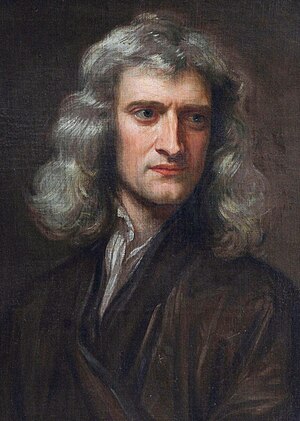

![Newton's law of universal gravitation for two ... Newton's law of universal gravitation for two ...]()






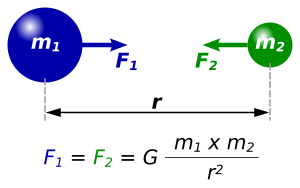




![\mathbf{F}_\mathrm{net} = \frac{\mathrm{d}}{\mathrm{d}t}\big[m(t)\mathbf{v}(t)\big] = m(t) \frac{\mathrm{d}\mathbf{v}}{\mathrm{d}t} + \mathbf{v}(t) \frac{\mathrm{d}m}{\mathrm{d}t}. \qquad \mathrm{(wrong)}](http://upload.wikimedia.org/math/4/5/f/45f0d6b5ec0038d6bad24d85274e027c.png)






 (calligraphic S), of a physical system. It is defined as the
(calligraphic S), of a physical system. It is defined as the ![\mathcal{S}[\mathbf{q}(t)] = \int_{t_1}^{t_2} L(\mathbf{q}(t),\mathbf{\dot{q}}(t), t) dt](http://upload.wikimedia.org/math/9/c/9/9c9b624070c632663dadd07d982df3b5.png)




 .
.




 Posted by
Posted by 




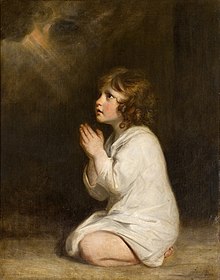









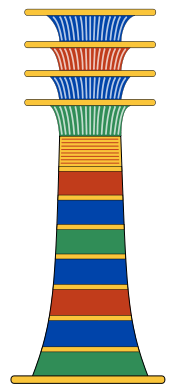


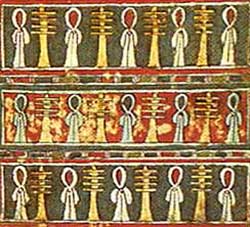
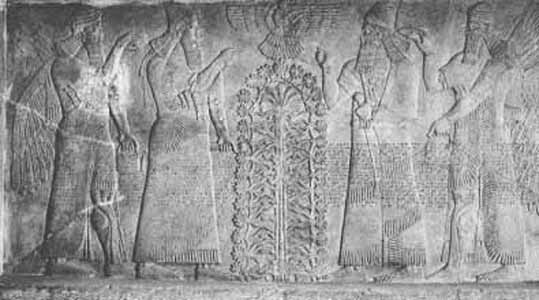


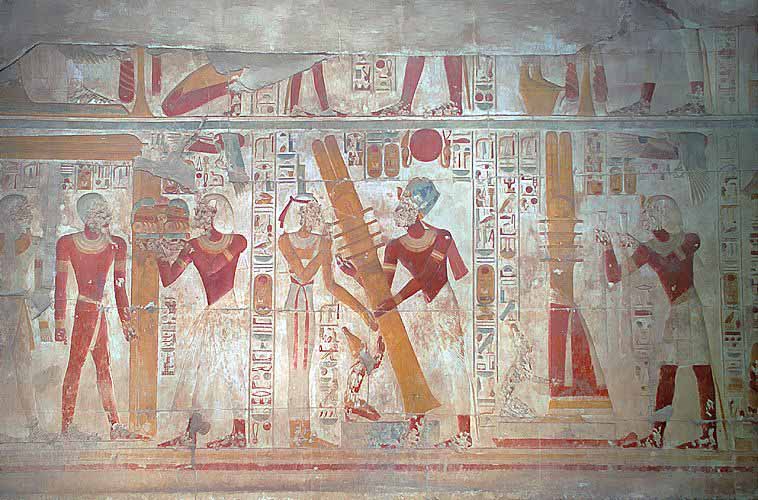
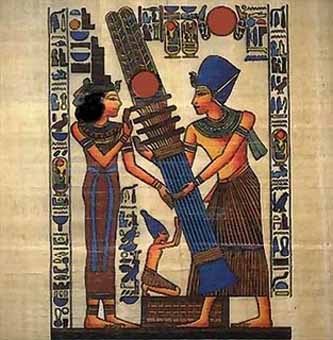
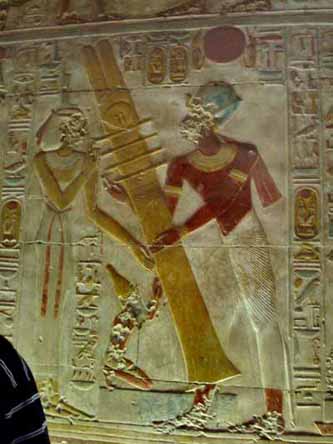
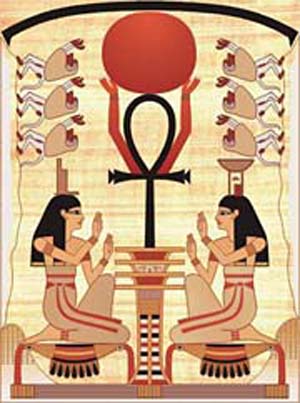
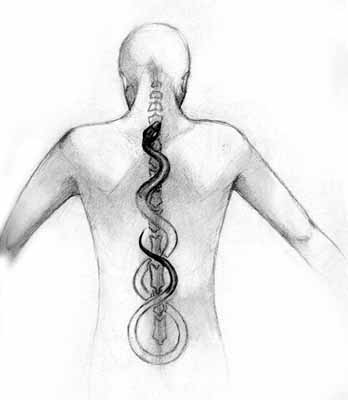


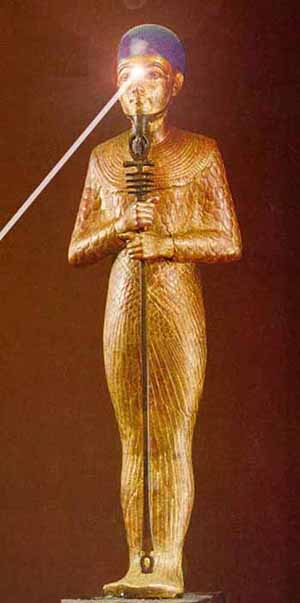
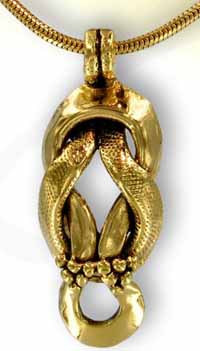
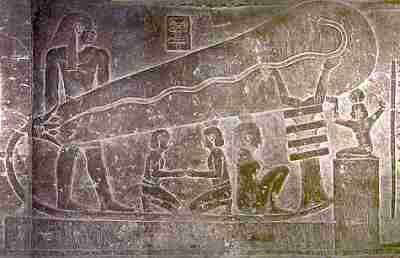
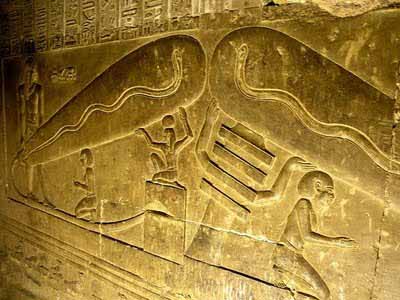

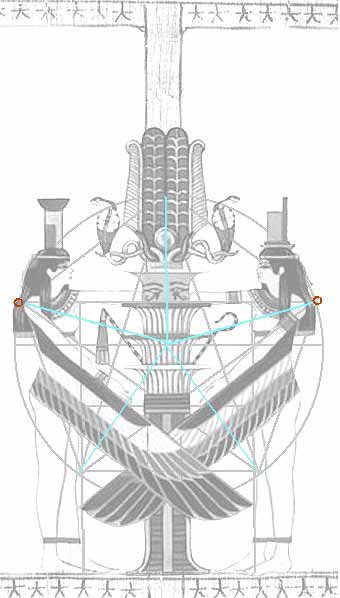
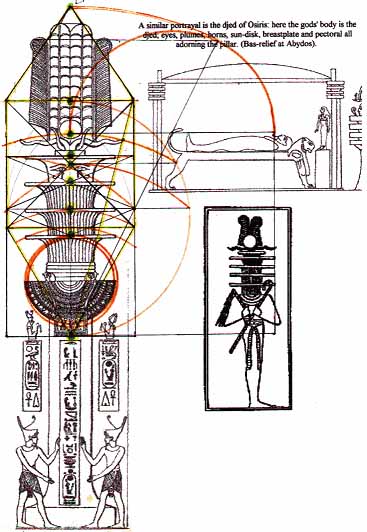
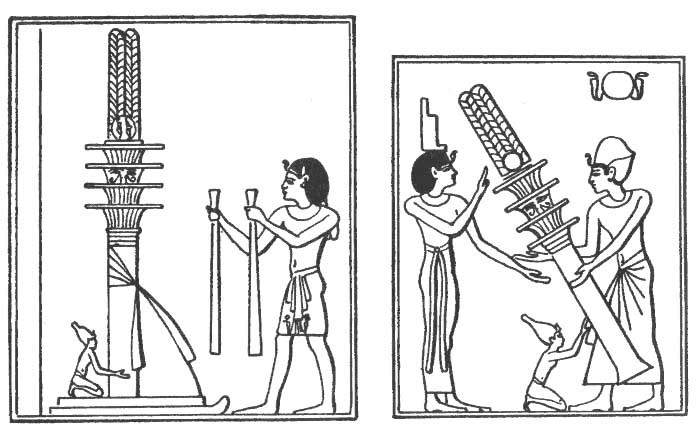


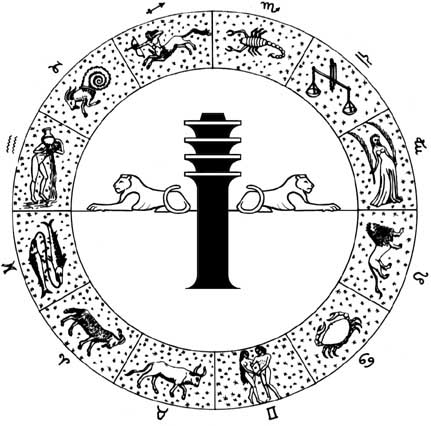





 The Flower of Life is the modern name given to a
The Flower of Life is the modern name given to a 


























